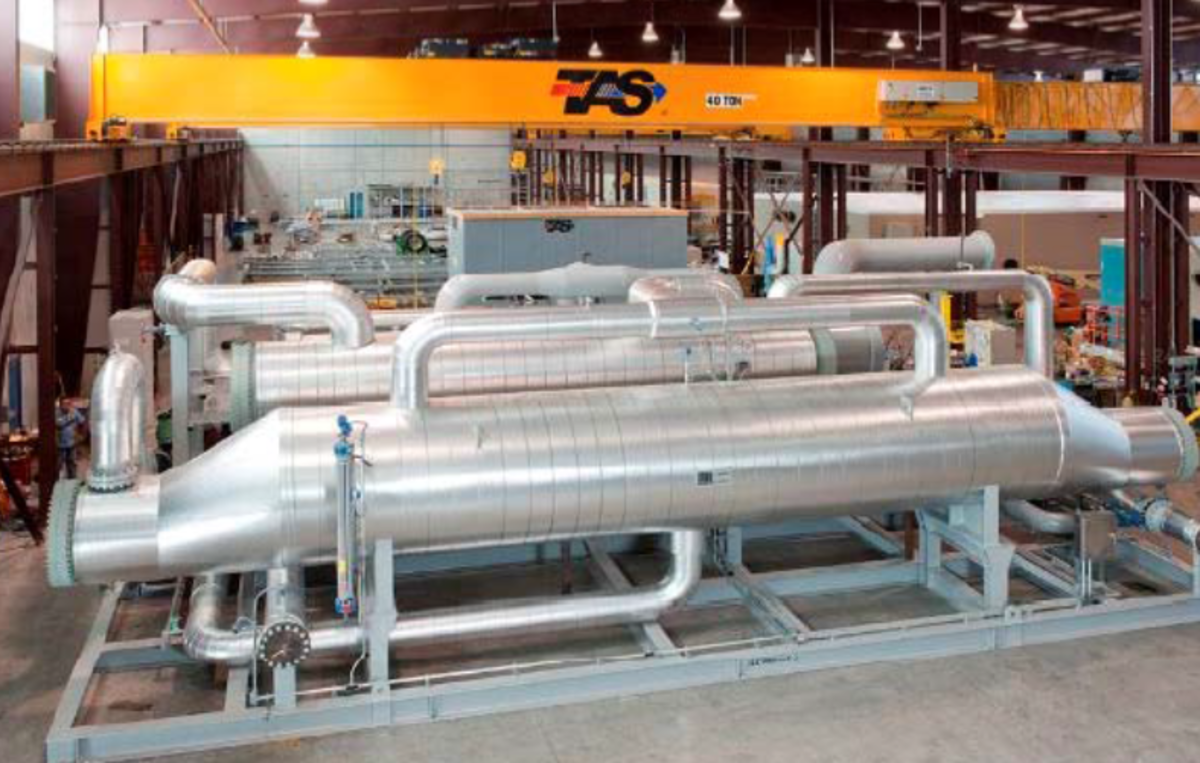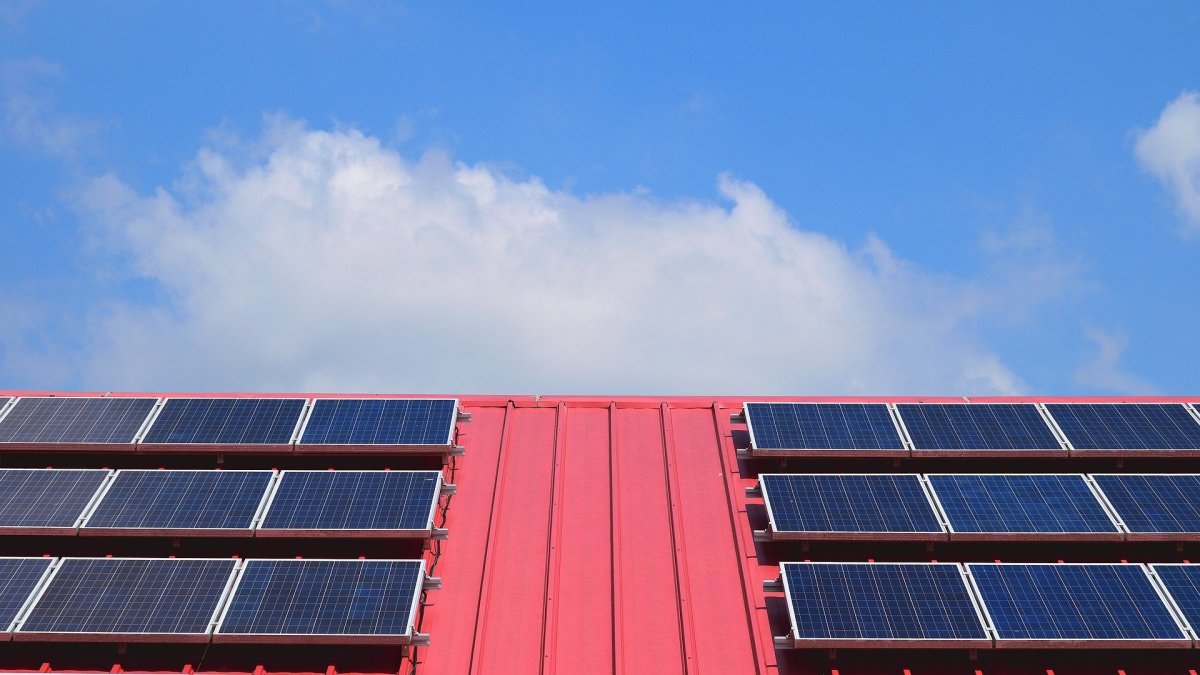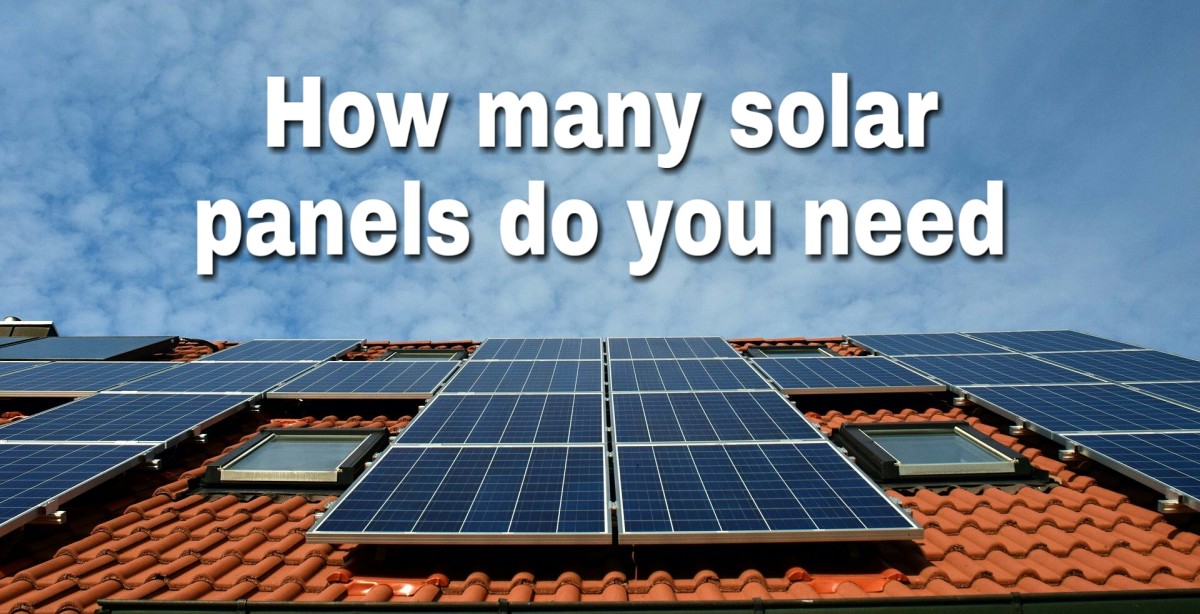Living Off The Electrical Grid By Generating Electricity On-Site At A Home Or Business
With electricity costs rising, many home and business owners are considering how they can live off the electrical grid by generating electricity at their home or place of business. For those that want to have a backup source of electricity to keep the electricity flowing when the electrical grid experiences power outages or want to live off the electrical grid permanently, there are a number of different options for generating electricity on a small scale on-site, including: renewable energy options (such as solar), natural gas powered fuel cells, and conventional fossil fuel electricity generators. Each of these sources of off the grid on-site electricity generation have their plusses and minuses, which need to be considered.
A Solar Electricity Generating System Can Be Used To Live Off The Grid
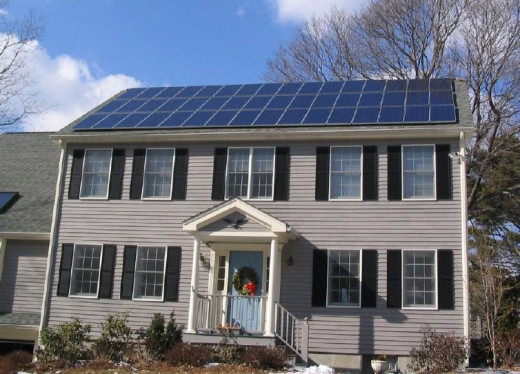
Look At Electricity Use Before Contemplating Living Off The Electrical Grid
There are already millions of people throughout the world who live off the electrical grid and obtain all of the electricity they need via on-site electrical generation sources, both renewable and non-renewable. One thing that many of these off the griders have in common is that they have taken a hard look at how much electricity they actually need to use and have taken steps to make their dwellings and lifestyles as energy efficient as possible, so they can keep the amount of off the grid electricity that they need to a minimum. The main benefit of doing a self energy audit is that if electricity demand can be reduced within your home or business, you can buy a smaller, less expensive off the grid electricity generation installation and incur lower operating costs.
Using Solar Produced Electricity To Live Off The Electrical Grid
While solar produced electricity is not the only renewable energy option that home or business owners can use to produce electricity on-site to live off the electrical grid, it is the most practical of all of the renewable energy options. Other renewable energy options, such as wind power or micro hydroelectric power may not be feasible or legal in all settings. The main limitations that off the grid solar electricity generating systems have is that they require plentiful sun-exposed roof space and enough space for battery backup power to store solar produced electricity, so it can be used when needed.
Depending upon where you live, your annual energy usage, and the average number of hours of sunlight that are available per day to produce solar electricity, you may need anywhere from 5,000 to 15,000 Watts (5 kilowatts to 15 kilowatts) of solar panels to cover 100% of your daily electricity needs, if you live in an average sized 2,300 square feet home. Each kilowatt of solar energy requires approximately 100 square feet of solar panels, so space limitations may impact plans for an off the grid solar electricity generation system that covers all of your daily electricity needs. The cost of an off the grid solar electricity generation system can also be a limiting factor for many people. A five (5) kilowatt electricity generation system costs between $25,000 to $50,000, including equipment and labor costs, such as an inverter (for smoothing out the electricity, so it can be used by sensitive electronics) and installation. Ten (10) and fifteen (15) kilowatt solar electricity generation systems, with the necessary equipment and installation, cost between $50,000 to $90,000 for a ten (10) kilowatt system and between $90,000 to $120,000 for a fifteen (15) kilowatt system. To add a sufficient battery bank that is needed to store the solar generated electricity, so it can be used at night and at times when the sun is unavailable, $1,500 to $3,000 needs to be added to the installation cost for a five (5) kilowatt system, and between $3,000 to $9,000 for ten (10) and fifteen (15) kilowatt systems. Solar electricity generating system costs vary considerably based upon the types of solar panels used, the types of accessories purchased, and local installation labor costs.
The cost of installing a solar electricity generating system may be offset by government grants and tax credits, if they are available; which in some cases are quite generous and can reduce installation costs considerably. Since off the grid solar electric generating systems are so costly, it is easy to understand why it is important to take a close look at electricity consumption and how electricity consumption can be reduce, prior to installing a solar electric generating system, so the system size can be reduced.
While new solar technologies are constantly in development and may increase solar output in the future, silicon-based solar panels that convert between 12% to 17% of the sunlight that they collect into useable electricity are still what small-scale solar installations use. Current battery technology that is used to store solar generated electricity requires some ongoing maintenance to ensure they are operating efficiently and last a long time, such as checking battery charges and acid levels on a regular basis. Even with proper maintenance, battery banks that are used to store solar generated electricity need to be replaced approximately every eight years, which is a considerable expense that needs to be factored into the decision regarding whether or not to install a solar electricity generating system that uses battery backup versus grid back up.
Another important consideration when considering whether solar power system is worth installing is how a solar power system increases the value of a home or business when the time comes to sell the property. A study by Lawrence Berkeley National Laboratory published in 2011 analyzed thousands of real estate transactions in California. The study found that a solar solar electricity generating system increased the value of a home or business by approximately $5,500 for each kilowatt of solar generating capacity. That translates into an additional $55,000 at time of sale, if a 10 kilowatt solar power system is installed.
Using Fuel Cell Produced Electricity To Live Off The Electrical Grid
An emerging energy option that home or business owners can use to produce electricity on-site to live off the electrical grid is a small-scale fuel cell electricity generator that is powered by either natural gas or propane, which is known informally as a home fuel cell. Fuel cell technology, which uses a reaction between hydrogen and oxygen to produce electricity without combustion, is not a new way to produce electricity; it has been around for decades. Hydrogen molecules are drawn out by a small-scale fuel cell from a home or business’ natural gas or propane supply. The hydrogen is then combined with oxygen available in the ambient air using an electrochemical process, which produces electricity, heat, water vapor and a small amount of carbon dioxide. There is no combustion of the natural gas or propane.
The problem with using fuel cells in small-scale applications, such as in a home or small business, has been the high cost and the lack of any fuel cell electricity generators designed for small-scale applications. However, that is slowly changing, as some companies, such as Bloom Energy and ClearEdge Power, are targeting the small business market with scaled down fuel cell models that produces both electricity and heat on-site. ClearEdge Power also offers small-scale fuel cell electricity generators for the homeowner market. Bloom Energy has plans to offer fuel cell models for the homeowner market, but have not started selling fuel cells to homeowners.
This is an exciting development for those who wish to live off the grid and produce their own electricity. Unfortunately, the scaled down fuel cell model that is designed for homeowner and small business applications is not cheap, with the equipment costing approximately $56,000 for a 5 kilowatt system, which does not include the labor necessary to install the small-scale fuel cell electrical generator (which adds a few thousand dollars to the overall cost). However, the cost for a small-scale fuel cell electrical generator can be offset in some jurisdictions by government grants and tax credits, and the cost is likely to come down over time as small-scale fuel cell electricity generation becomes more common and the equipment is mass produced.
The ClearEdge small-scale fuel cell home energy system, which provides both 5 kilowatts of electricity and 750 gallons of hot water per day, is approximately the size of a refrigerator. It can be placed in an existing furnace room, garage, or in some cases outdoors. It can be connected to the electrical grid or run independent of the grid for those who want to produce their own electricity and live off the grid. For installations that are connected to the electrical grid, the ClearEdge home fuel cell can be programmed to send electricity to select electrical circuits if grid electric power is lost, so that fuel cell produced electricity is sent to a home’s critical appliances during a grid power outage.
ClearEdge Power Home Fuel Cell
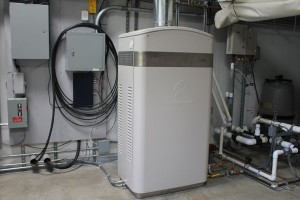
Using A Generator To Live Off The Electrical Grid
While not as sexy or cutting edge as generating your own electricity using solar energy or fuel cells, the most practical (and most expensive to operate) way to produce electricity on-site to live off the electrical grid is a portable or stationary electrical generator that is powered by fossil fuels, such as gasoline, propane, or diesel. While portable electrical and stationary generators are much cheaper to buy and install than other off the grid electricity production methods, such as solar panels systems and fuel cells, fossil fuel generators are much more expensive to operate than solar or fuel cells electricity generating systems, which is the major drawback to using fossil fuel electricity generators. However, some frugal electricity users chose fossil fuel electric generators to provide off the grid electricity in a cost effective manner. They accomplish this by using highly efficient appliances and lighting in very conservative applications to save on fuel consumption and operating costs. For more about what types of portable or stationary electrical generators would be suitable for living off the electrical grid, see: Buying A Power Generator For A Home Or Small Business.
What It Takes To Live Off The Electrical Grid | The Bottom Line
The bottom line is that living off the electrical grid by generating electricity on-site at a home or place of business using solar or fuel cell technology is an expensive proposition that requires a large up-front investment. The upside is that such a large up-front expenditure could pay for itself over time and lead to long-term energy cost savings, if implemented correctly. Living off the electrical grid using a fossil fuel generator requires a much smaller upfront investment, but providing fuel to generate electricity using a generator is expensive and can be quite costly in the long run, if electricity usage is not curtailed greatly.
The first step when implementing the installation of either a solar, fuel cell, or fossil fuel generator off the grid on-site electricity generating system, is to take a close look at the efficiency of the electrical appliances and lighting within a home or business and how they can be changed out or updated to more efficient models, so that the installation and operating costs for solar, fuel cell, or fossil fuel generator off the grid on-site electricity generating system can be reduced. Keep in mind that once you are living off the grid and generating the electricity you need on-site at your home or business, you are responsible for maintaining the equipment properly, so that it works as it is designed to work to enable you to live independent of the electrical grid.
The "New Grid" & ClearEdge Power's Fuel Cell Technology
This content is accurate and true to the best of the author’s knowledge and is not meant to substitute for formal and individualized advice from a qualified professional.
© 2012 John Coviello

